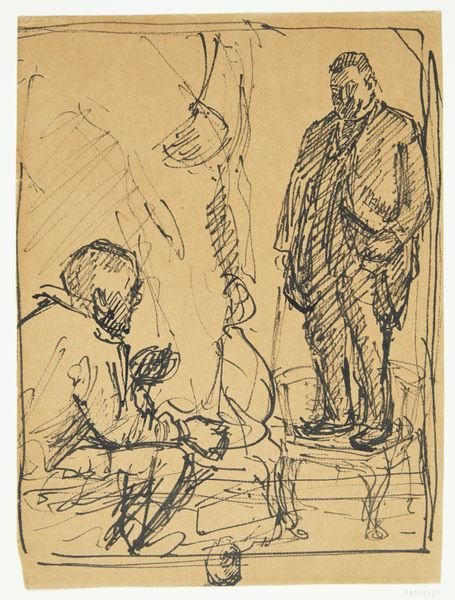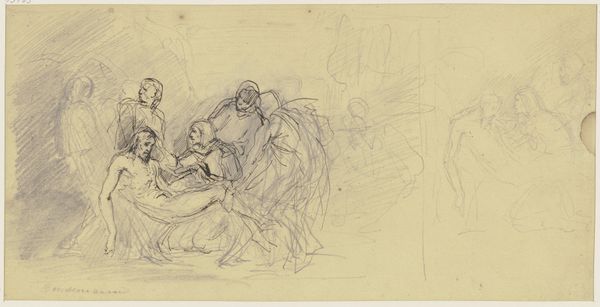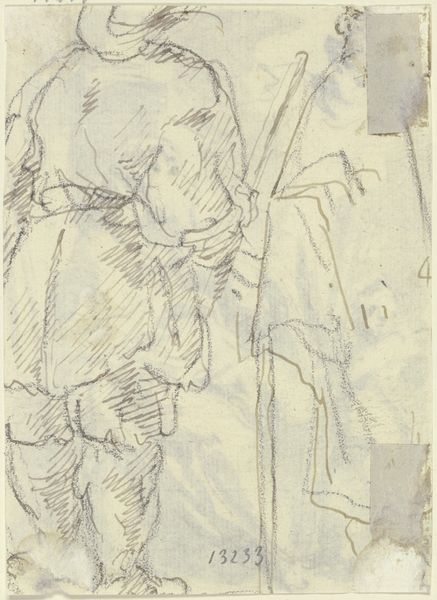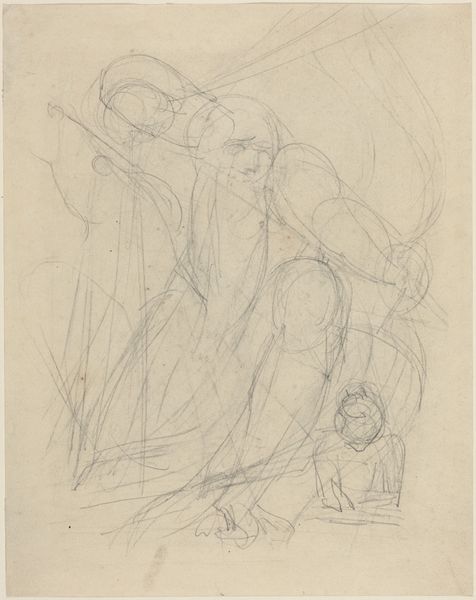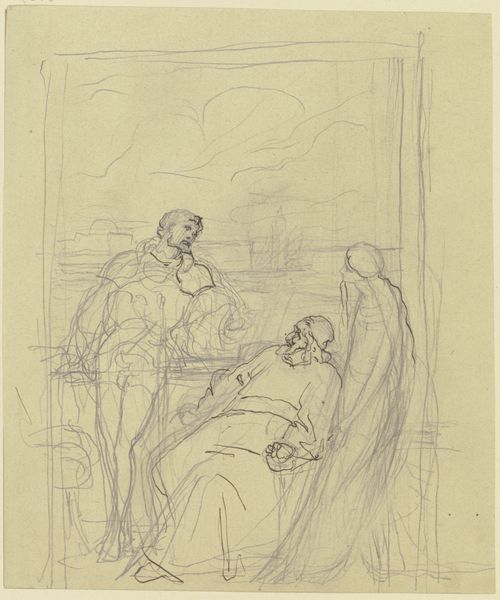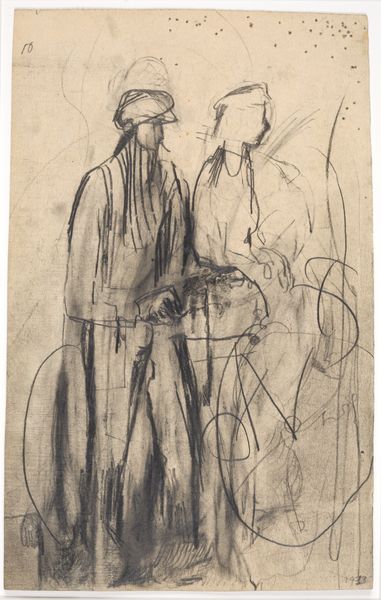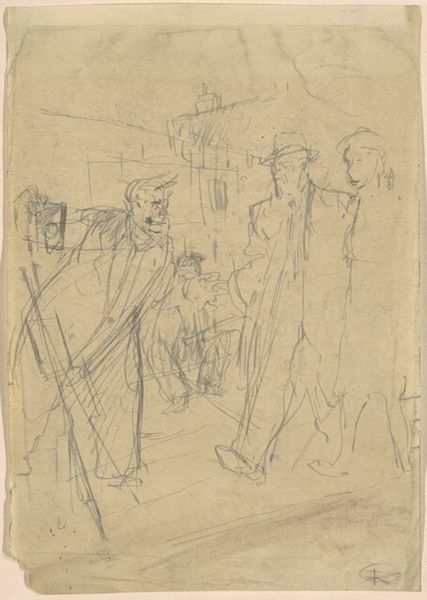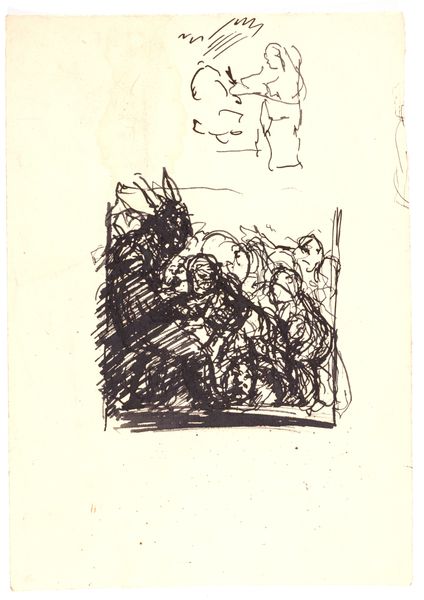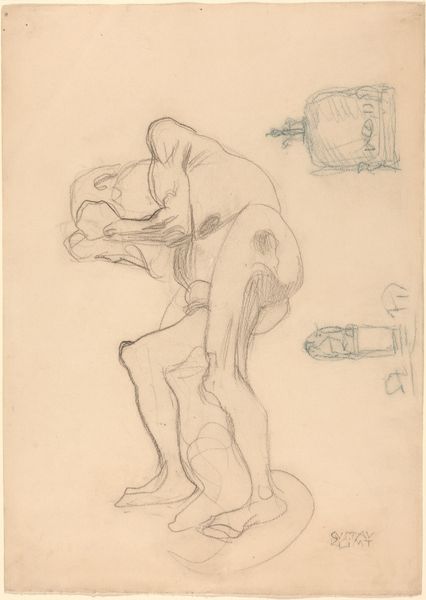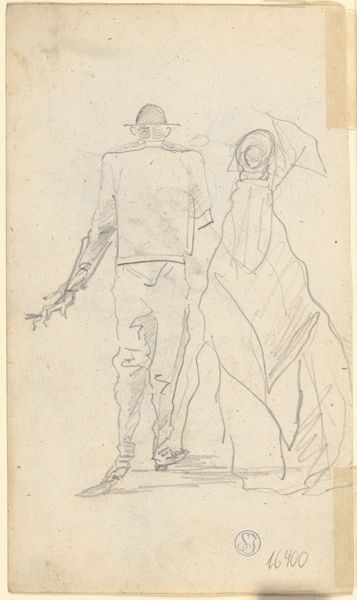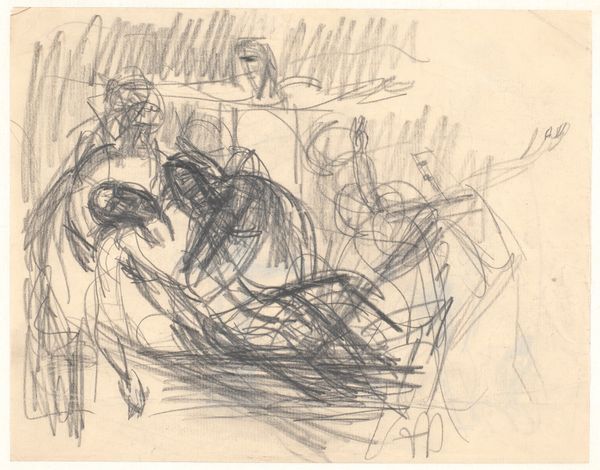
drawing, pencil
#
portrait
#
drawing
#
figuration
#
pencil
#
genre-painting
Dimensions: 281 mm (height) x 190 mm (width) (billedmaal)
Curator: Here we have Christian Kongstad Petersen’s 1933 pencil drawing, "Efter middagen," or "After Dinner." What do you make of this at first glance? Editor: Well, there's an anxious energy about it. That sketch-like quality and gray shading suggests tension. There is a very definite, charged encounter unfolding, even within what looks like a scene of leisure. Curator: Absolutely, the tension almost vibrates off the page. Look closely— you can almost feel Petersen grappling with line and form, searching for the essence of the moment, leaving traces of the process visible. Think of the kind of pencil and paper he used. These materials really give immediacy and, well, almost brutal honestly. Editor: That’s fascinating. Thinking about materials… I'm considering that the swift, assured lines reflect the mechanization of drawing itself. This work looks very hurried as if created in-situ without regard to the conventions or perceived labor typically associated with portraits. It’s fascinating to see high art converge with what might be considered quick commercial craft. Curator: I see that—the tension between what appears unfinished versus those definitive expressive lines. To me, the subject seems deeply personal. Like glimpsing into a moment of intense human interaction and yet we are distant from it and outside, even ghostly and watching from beyond. And look—the body language really seems to imply both connection and opposition simultaneously, the negotiation in terms of gesture and the turn of the head really evokes drama. Editor: It makes me question what "dinner" means within this setting— and also consider, beyond personal dramas, the historical-economic elements. Whose dinner is this? What kind of access did Petersen have to that scene? The type of materials, and how widely distributed would such artist material have been? Curator: Those are great questions! Perhaps this snapshot after dinner captures an underlying, unresolved discomfort in relationships…Or the ever-shifting negotiations within social hierarchies and classes. Editor: Right! It is less about representing someone who is specific and more about revealing a tension and what it reveals about the structure itself, using the most humble means. Curator: So, looking beyond a traditional portrait or genre painting—this drawing gives the sensation of a candid moment of interpersonal intensity or even quiet observation using pencil and paper. Editor: Yes, transforming a scene into a tangible artifact. Seeing and experiencing that scene today, in a museum or exhibition, brings attention to what and whose memories matter in culture.
Comments
No comments
Be the first to comment and join the conversation on the ultimate creative platform.
